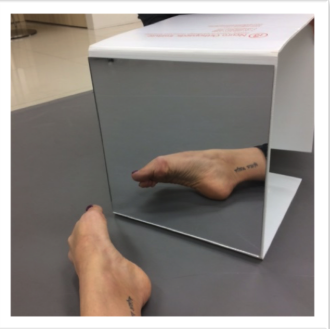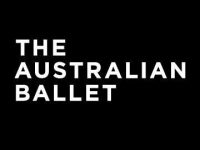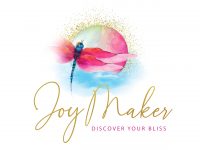 Mirror Box Therapy
Mirror Box Therapy
Returning to dance after injury to the foot and ankle by tricking your brain!
by Sally Harrison, Perfect Form Physiotherapy
After an injury to the ankle/foot complex we can be left with a foot that feels tighter, painful or even disconnected to the body. Despite active rehabilitation, we may still feel a barrier to our progress, and our improvement can seem to have plateaued.
At this stage we may want to introduce mirror box therapy into our home rehab programme.
The aim of mirror box therapy is to alter how the sensory area of the brain responds to the area of the body in question. Within the sensory cortex of the brain we have a map of the body called the ‘homunculus’. It is representative of sensory input that we feel, and therefore areas that are very sensitive such as the lips and hands are larger in representation.
Under normal circumstances we receive sensory information from the receptors in the joints, tendons, ligaments, fascia and skin. This information is received by the somatosensory cortex (homunculus). The information is then processed by the brain which then communicates with the motor cortex and we bring about movement of the limb.
After injury and the experience of pain, this information process can become distorted and therefore the output of movement can also be distorted (painful, stiff, restricted etc).
Mirror box therapy therefore uses visual input to drive and normalise the sensory cortex and trick the brain into thinking the damaged area is working well. This communication problem may be at the area involved or in the homunculus region itself, and with therapy we are aiming to change activity at a neural synaptic level to bring about improved connections and movement.
Mirror box therapy was first proposed in 1996 by V.S. Ramachandran at the university of California, San Diego. Further work was then done by David Butler and Lorrimor Moseley of the Neuro Orthopaedic Institute (NOI). A great video on Butler’s work explaining this therapy can be seen here: http://youtu.be/hMBA15Hu35M
Below are their guidelines for starting to use the mirror box equipment as outlined by the NOI:
- Commence by looking at pictures of R & L foot. Can you recognise and describe the foot? This helps to promote early re-organisation and rejuvenation of sensory cortex.
- Think of moving the foot, imagine pointing and flexing with the eyes closed (visualisation, no actual movement)
- Use the box and move the unaffected foot watching in the mirror at the reflection. It will look like both feet are moving.
- Now use bilateral movement!! Moving both feet with the same action. (See ideas below).
- How long, how often? Aim for 13min/day or 2-3 sessions/day
- You may omit step 1 of the process above after practice.
Exercise Ideas (painful foot goes behind the mirror)
- Look at the foot in the mirror with no movement
- Move the foot about in a general direction or point and flex
- Wiggle the toes (visual input takes over sensory input)
- Take weight through the limb/lean (sensory and visual)
- Squeeze the limb/scrunch the toes
- Use objects that you are accustomed to using on the foot (ballet shoe)
- Start to replicate the movements with the other foot behind the mirror wall, maybe at a smaller degree. Both feet will work together simultaneously.
- Change the environment while performing the movement (eg. light, sounds, people, time of day, emotional state, perform while singing a song, etc)
IMPORTANT NOTES
- Both feet must be symmetrical (ie. same socks, shoes, tights, tattoos etc on show)
- Injured body part must be well hidden behind the mirror
- Ensure limb in box doesn’t hurt, sweat, change temperature etc.

Examples of foot exercises to do with a mirror box are point-through-demi-point, doming, and rises.
This therapy will form part of a comprehensive rehab programme, but is not a substitute for thorough assessment and treatment.











